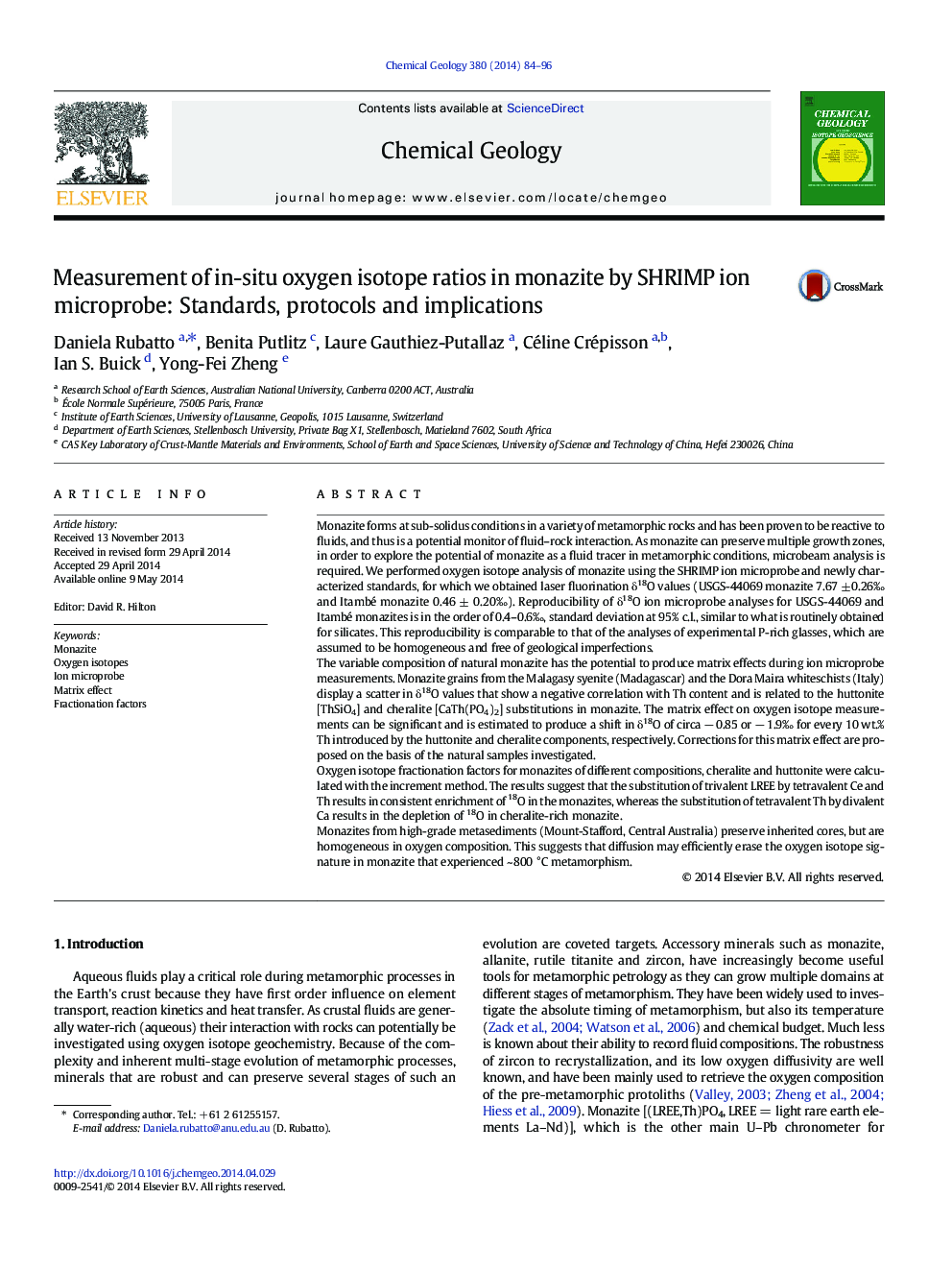| کد مقاله | کد نشریه | سال انتشار | مقاله انگلیسی | نسخه تمام متن |
|---|---|---|---|---|
| 4698732 | 1637592 | 2014 | 13 صفحه PDF | دانلود رایگان |

• Reproducibility of δ18O analyses of monazite by SHRIMP is 0.4–0.6‰, 95% c.l.
• We propose laser fluorination δ18O reference values for two monazite standards.
• We present a matrix correction for oxygen isotope analyses by ion microprobe.
• We calculate oxygen fractionation factors for monazite, huttonite and cheralite.
• We suggest that oxygen isotopic differences in monazite are not retained at 800 °C.
Monazite forms at sub-solidus conditions in a variety of metamorphic rocks and has been proven to be reactive to fluids, and thus is a potential monitor of fluid–rock interaction. As monazite can preserve multiple growth zones, in order to explore the potential of monazite as a fluid tracer in metamorphic conditions, microbeam analysis is required. We performed oxygen isotope analysis of monazite using the SHRIMP ion microprobe and newly characterized standards, for which we obtained laser fluorination δ18O values (USGS-44069 monazite 7.67 ± 0.26‰ and Itambé monazite 0.46 ± 0.20‰). Reproducibility of δ18O ion microprobe analyses for USGS-44069 and Itambé monazites is in the order of 0.4–0.6‰, standard deviation at 95% c.l., similar to what is routinely obtained for silicates. This reproducibility is comparable to that of the analyses of experimental P-rich glasses, which are assumed to be homogeneous and free of geological imperfections.The variable composition of natural monazite has the potential to produce matrix effects during ion microprobe measurements. Monazite grains from the Malagasy syenite (Madagascar) and the Dora Maira whiteschists (Italy) display a scatter in δ18O values that show a negative correlation with Th content and is related to the huttonite [ThSiO4] and cheralite [CaTh(PO4)2] substitutions in monazite. The matrix effect on oxygen isotope measurements can be significant and is estimated to produce a shift in δ18O of circa − 0.85 or − 1.9‰ for every 10 wt.% Th introduced by the huttonite and cheralite components, respectively. Corrections for this matrix effect are proposed on the basis of the natural samples investigated.Oxygen isotope fractionation factors for monazites of different compositions, cheralite and huttonite were calculated with the increment method. The results suggest that the substitution of trivalent LREE by tetravalent Ce and Th results in consistent enrichment of 18O in the monazites, whereas the substitution of tetravalent Th by divalent Ca results in the depletion of 18O in cheralite-rich monazite.Monazites from high-grade metasediments (Mount-Stafford, Central Australia) preserve inherited cores, but are homogeneous in oxygen composition. This suggests that diffusion may efficiently erase the oxygen isotope signature in monazite that experienced ~ 800 °C metamorphism.
Journal: Chemical Geology - Volume 380, 25 July 2014, Pages 84–96